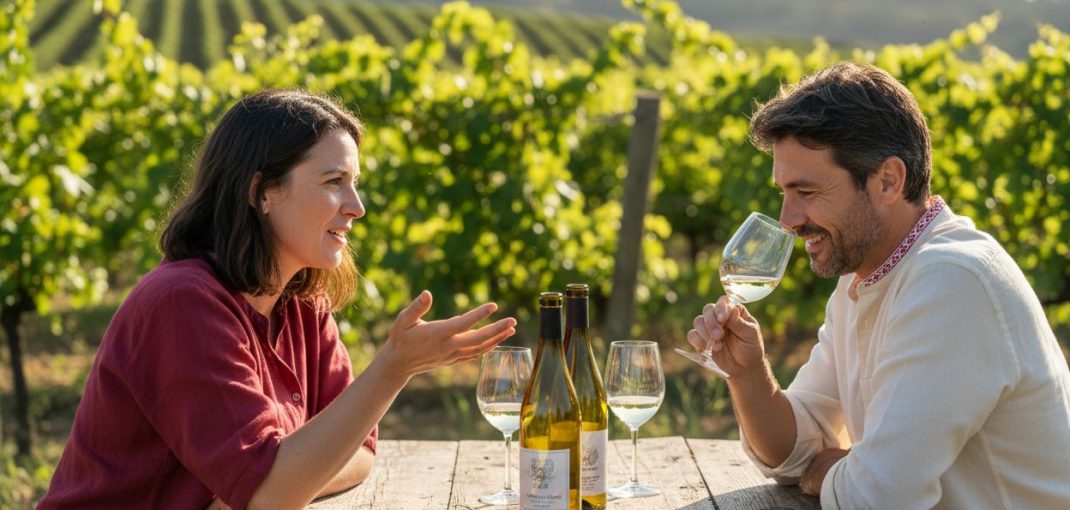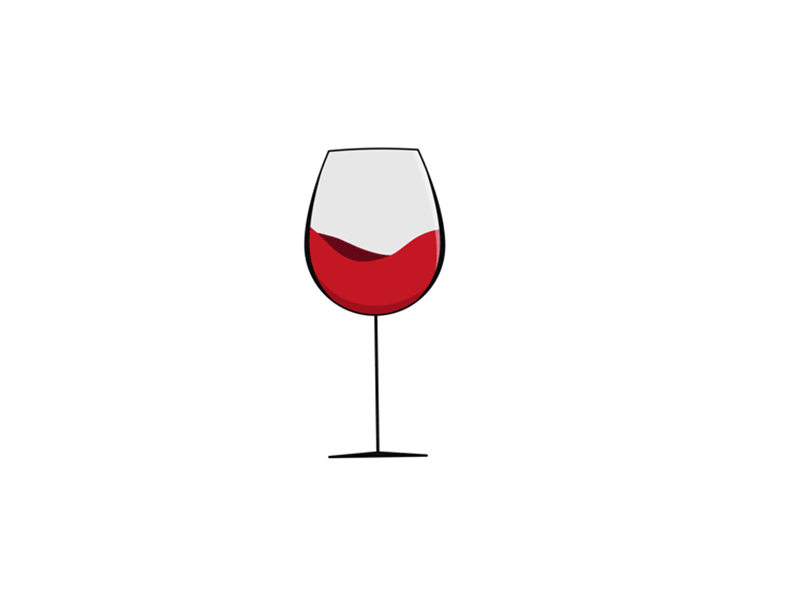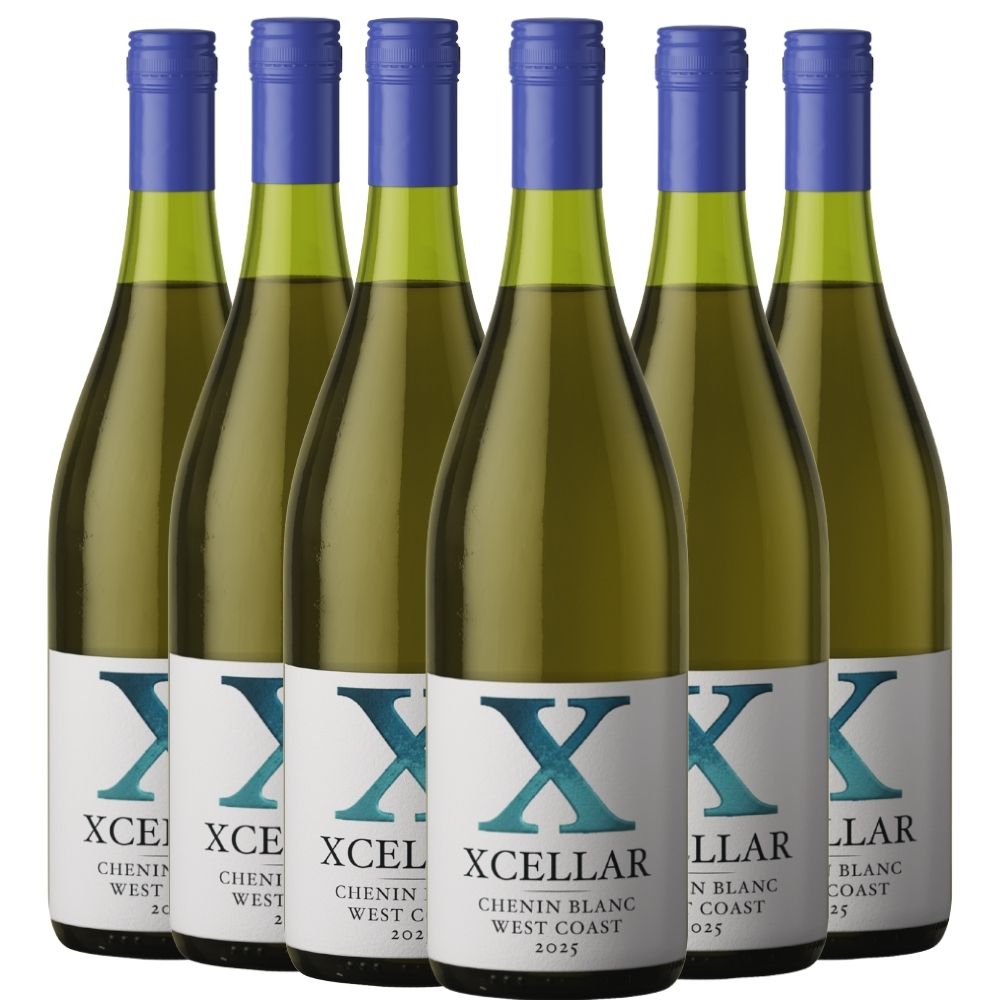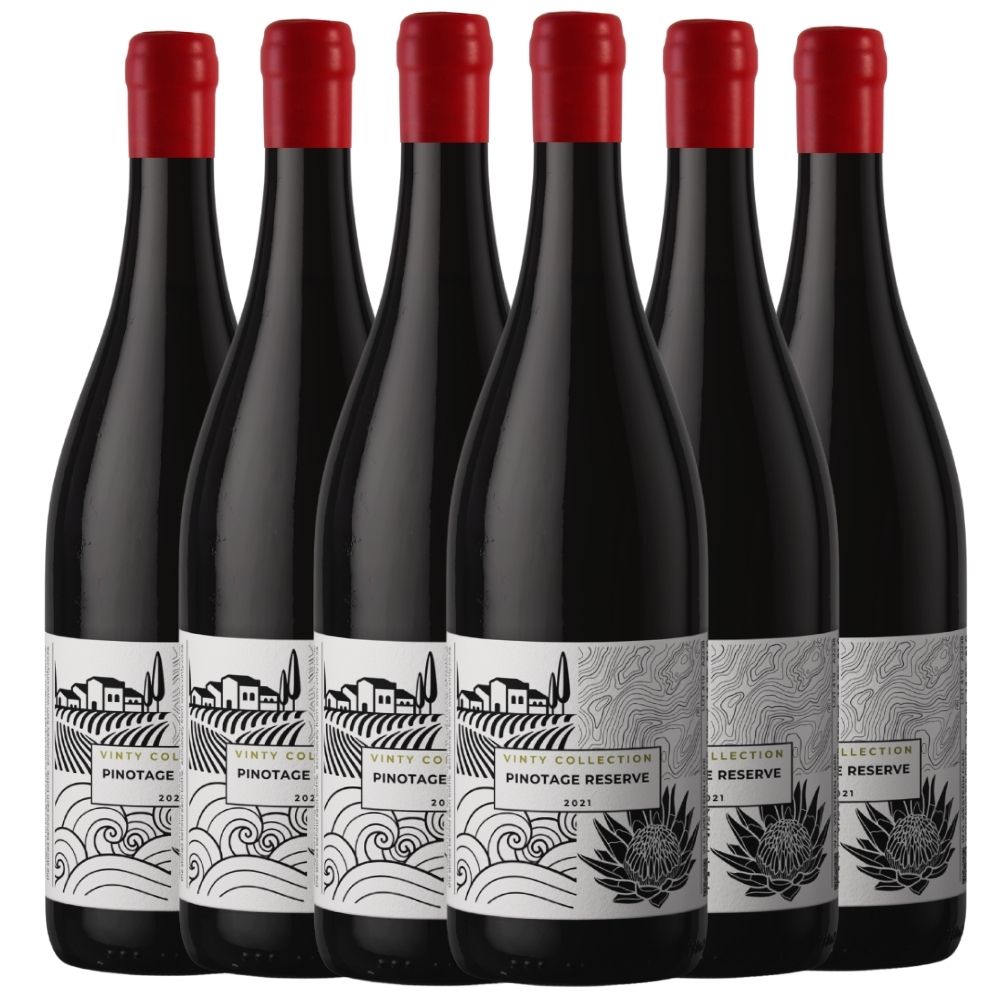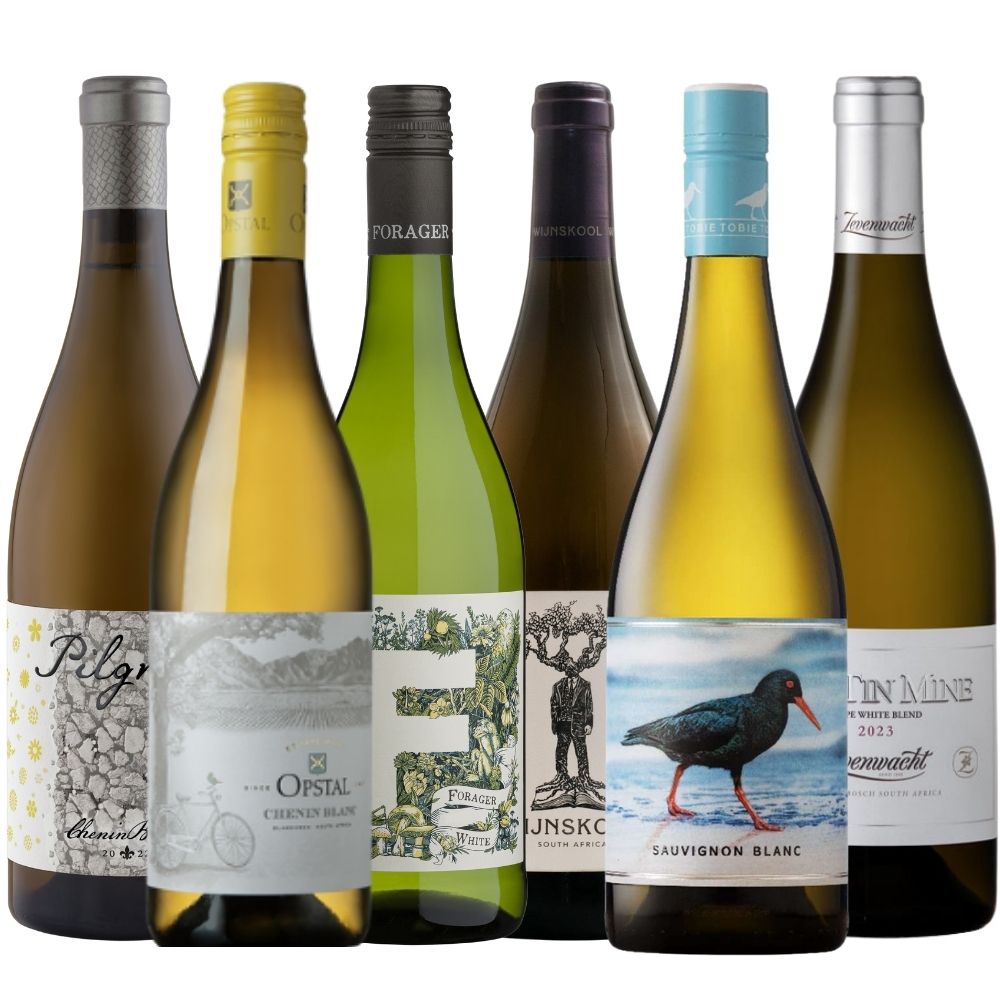Chenin Blanc and Sauvignon Blanc are two of South Africa’s best-loved white wines, each with a flavour profile that keeps wine lovers talking. Most people expect French grapes to dominate the wine world, but in South Africa, Chenin Blanc actually represents
about 18 percent of the country’s vineyard plantings, making it the most common grape in the nation. What’s wild is that this French import shines brightest right here at home, weaving local terroir and tradition into every glass.
Table of Contents
Quick Summary
| Takeaway |
Explanation |
| Chenin Blanc adapts well to climates |
This grape variety thrives in various conditions, making it a popular choice among winemakers in South Africa. |
| Sauvignon Blanc is a culinary chameleon |
Its high acidity and herbal notes enhance a wide range of dishes, from seafood to vegetarian cuisine. |
| Both wines express local terroir |
The unique geological and climatic conditions of South Africa shape the flavours and characteristics of these grape varieties. |
| Chenin Blanc offers versatile food pairings |
Its adaptability means it pairs wonderfully with diverse cuisines, from creamy cheeses to spicy dishes. |
| Sauvignon Blanc is perfect for palate-cleansing |
Its zesty profile cuts through rich foods, making it ideal for fresh salads and grilled fish. |
What are Chenin Blanc and Sauvignon Blanc?
Chenin Blanc and Sauvignon Blanc stand as two remarkable white wine grape varieties that offer wine enthusiasts distinctive taste profiles, cultural histories, and winemaking traditions. While both originate from France, they’ve found exceptional expression in South African vineyards, creating unique interpretations that celebrate local terroir and winemaking expertise.
The Origins and Global Spread
Chenin Blanc, originally from the Loire Valley in France, arrived in South Africa during the 17th century and quickly became one of the most planted white grape varieties in the country. According to
Wine Folly, this versatile grape adapts remarkably well to different climatic conditions, making it a favourite among South African winemakers.
Sauvignon Blanc, equally prestigious, originates from Bordeaux and has gained worldwide recognition for its crisp, vibrant characteristics. Decanter Magazine notes that the grape has become a global phenomenon, with significant plantings across New Zealand, Chile, and South Africa.
Distinctive Characteristics
Each grape variety brings its own remarkable personality to the wine glass. Chenin Blanc typically presents:
- Remarkable acidity that makes it suitable for various wine styles
- Flavour profiles ranging from green apple and pear to richer tropical fruit notes
- Exceptional ability to produce wines from bone dry to lusciously sweet
Sauvignon Blanc, in contrast, is known for:
- Pronounced herbal and grassy aromatics
- Crisp, zesty flavours often featuring citrus and green bell pepper
- A refreshing, typically lighter-bodied wine perfect for warm days
Understanding these grape varieties goes beyond mere academic interest—it’s about appreciating the nuanced artistry of winemaking.
Read more about unique South African wine varieties and discover how local winemakers transform these grapes into liquid poetry.
Why Chenin Blanc and Sauvignon Blanc Matter in Wine Selection
Selecting the perfect white wine goes far beyond simply choosing a pleasant drink. Chenin Blanc and Sauvignon Blanc represent more than grape varieties—they are cultural ambassadors that showcase the intricate dance between terroir, winemaking tradition, and individual expression.
Versatility and Food Pairing Potential
The true magic of these grape varieties lies in their extraordinary versatility.
South African Wine Industry Information & Systems highlights that Chenin Blanc can transform dramatically depending on winemaking techniques, ranging from bone-dry styles to lusciously sweet dessert wines. This adaptability makes it an exceptional choice for diverse culinary experiences.
Sauvignon Blanc, with its crisp and zesty profile, emerges as a culinary chameleon. Its high acidity and herbaceous notes complement a wide range of dishes, from delicate seafood to complex vegetarian cuisine.
The wine’s ability to cut through rich flavours makes it a sommelier’s secret weapon.
Cultural and Economic Significance
Beyond taste, these grape varieties hold profound cultural and economic importance for South African winemaking. Chenin Blanc, locally known as Steen, represents approximately 18% of South Africa’s vineyard plantings, making it the most planted grape variety in the country. Its journey from Loire Valley to becoming a South African wine icon symbolises the resilience and adaptability of both the grape and the winemaking community.
Key considerations that make these wines matter include:
- Representation of South African winemaking heritage
- Ability to express unique regional characteristics
- Potential for creating wines across multiple price points
- Sustainable farming practices often associated with these varieties
Explore our curated selection of South African wines and discover how these remarkable grape varieties tell stories of landscape, tradition, and innovation in every single pour.
How Terroir Influences Chenin Blanc and Sauvignon Blanc
Terroir represents the intricate environmental narrative behind every wine, transforming grape varieties from mere agricultural products into profound expressions of landscape, climate, and human interaction. For Chenin Blanc and Sauvignon Blanc, this narrative becomes particularly compelling in the diverse South African wine regions.
Geological and Climatic Interactions
South Africa’s extraordinary geological diversity creates a complex playground for these grape varieties. According to
Wines of South Africa, the country’s vineyards span over 20 distinct geological formations, each imparting unique mineral characteristics to the wines.
Chenin Blanc thrives in regions with varied soil compositions. In the granite-based soils of Stellenbosch, the grape develops remarkable mineral undertones, while the limestone-rich areas of Swartland contribute to its structural complexity.
Temperature and sunlight exposure become critical factors, with cooler regions producing more delicate, acidic expressions and warmer zones generating riper, more tropical flavour profiles.
Microclimatic Nuances
Sauvignon Blanc demonstrates extraordinary sensitivity to microclimatic variations. The grape’s aromatic profile shifts dramatically based on subtle environmental changes. Cool maritime influences from regions like Walker Bay create Sauvignon Blancs with pronounced citrus and green pepper notes, while inland areas produce wines with richer, more tropical characteristics.
Key terroir elements influencing wine character include:
- Soil composition and mineral content
- Elevation and slope orientation
- Proximity to water bodies
- Annual temperature and rainfall patterns
- Wind exposure and atmospheric conditions
Discover the depth of South African wine heritage and understand how each bottle tells a unique story of its birthplace. The magic of Chenin Blanc and Sauvignon Blanc lies not just in their grape genetics, but in their remarkable ability to capture and communicate the essence of their specific terroir.
Key Flavour Profiles and Tasting Notes of Each Variety
Tasting wine is an intimate journey of sensory exploration, where Chenin Blanc and Sauvignon Blanc offer dramatically different yet equally compelling narratives through their distinctive flavour profiles. Understanding these nuances transforms wine from a mere beverage into a complex sensory experience.
Chenin Blanc: A Symphony of Subtlety
Wines of South Africa reveals that Chenin Blanc embodies remarkable versatility, presenting a kaleidoscope of flavours that shift with winemaking techniques and regional expressions.
Young Chenin Blanc typically showcases vibrant fruit characteristics, including:
- Green apple and pear in cooler climate regions
- Ripe quince and melon in warmer zones
- Honeyed notes in late-harvest or sweet wine styles
- Subtle mineral undertones reflecting specific terroir
Mature Chenin Blanc develops extraordinary complexity, introducing nuanced flavours of bruised apple, toasted nuts, and a remarkable honeyed richness that speaks to its ageing potential.
Sauvignon Blanc: Crisp and Provocative
Sauvignon Blanc emerges as the more assertive counterpart, delivering an immediate and energetic flavour profile. Its characteristic herbaceous and citrus notes create a wine that demands attention. The grape’s aromatic intensity varies dramatically between cool maritime and inland regions, presenting a spectrum of expressions:
- Zesty lime and green bell pepper in cooler climates
- Tropical passion fruit and guava in warmer areas
- Pronounced gooseberry and nettle characteristics
- Sharp, cutting acidity that cleanses the palate
Explore our guide to wine tasting techniques and unlock the subtle art of discerning these intricate flavour profiles. The true magic of these wines lies not just in their taste, but in their ability to tell a story of landscape, climate, and winemaking craft in every single glass.
Pairing Chenin Blanc and Sauvignon Blanc with Food
The art of food and wine pairing transforms dining from a simple meal into a symphony of flavours, where Chenin Blanc and Sauvignon Blanc emerge as versatile culinary companions. Understanding their unique characteristics allows wine enthusiasts to create extraordinary gastronomic experiences.
Chenin Blanc: A Versatile Culinary Partner
Wines of South Africa emphasises the remarkable adaptability of Chenin Blanc, making it a dream for food pairing.
The wine’s dynamic acidity and flavour spectrum create harmonious connections with diverse cuisines. Ideal pairing strategies include:
- Creamy goat cheese dishes highlighting its mineral undertones
- Spicy Asian cuisine complementing its slightly sweet expressions
- Roasted poultry with its balanced fruit and acid profile
- Seafood preparations that appreciate its crisp, refreshing nature
Particularly exceptional are aged Chenin Blancs with richer, nuttier characteristics that beautifully accompany complex dishes like mild curries or creamy mushroom risottos.
Sauvignon Blanc: Sharp and Precise Pairings
Sauvignon Blanc operates as a culinary precision instrument, its high acidity and herbaceous notes cutting through rich and fatty foods. The wine’s zesty profile makes it an exceptional match for dishes that require a palate-cleansing element. Recommended pairings celebrate its vibrant character:
- Goat cheese and herb-based appetisers
- Grilled fish with citrus accompaniments
- Fresh green salads with tangy vinaigrettes
- Vegetarian dishes featuring bell peppers and green vegetables
Discover more about crafting perfect wine pairings and elevate your culinary experiences. The magic lies not just in matching flavours, but in creating a dialogue between wine and food that transforms an ordinary meal into an extraordinary sensory journey.
Turn Your Curiosity into a Personal Wine Discovery
If you have ever wondered how to taste the nuance between Chenin Blanc and Sauvignon Blanc, you are not alone. This guide brings clarity to their unique styles and food pairings, but when it comes time to choose a bottle, the real challenge begins. With so many mainstream wine options out there, finding that perfect, small-batch South African wine with authenticity and character can feel daunting. You deserve more than a generic white pulled from a crowded shelf.
Vinty helps you find the right bottle with heart and heritage. Our
curated selection makes it easy to explore wines as vibrant and layered as South Africa itself. Want your wine to carry a story—just like what you learned in this guide? Visit
Vinty today and discover a white wine that feels personal, not pretentious. Start your search now and let your next glass of Chenin Blanc or Sauvignon Blanc be one you will remember.
Frequently Asked Questions
What are the main flavour differences between Chenin Blanc and Sauvignon Blanc?
Chenin Blanc typically features flavours ranging from green apple and pear to honeyed notes, while Sauvignon Blanc leans towards zesty citrus and herbal characteristics. To appreciate these differences, taste each wine side by side and note how the flavour profiles contrast.
How can I pair Chenin Blanc and Sauvignon Blanc with food?
Chenin Blanc pairs well with creamy goat cheese and spicy dishes, whereas Sauvignon Blanc complements grilled fish and fresh salads. Experiment with different pairings to discover how each wine enhances the meal, especially by trying one varietal with multiple dishes.
What types of wine styles can be made from Chenin Blanc and Sauvignon Blanc?
Chenin Blanc can produce styles ranging from bone dry to sweet dessert wines, while Sauvignon Blanc is predominantly crisp and refreshing. Explore various producers to taste these diverse styles and broaden your understanding of each grape’s versatility.
How does terroir affect the taste of Chenin Blanc and Sauvignon Blanc?
Terroir influences both grapes by imparting unique flavours and aromas based on factors like soil composition and climate conditions. Taste wines from different regions to experience how terroir shapes the character of each varietal.
What are the characteristics of aged Chenin Blanc compared to young Chenin Blanc?
Aged Chenin Blanc often develops complex flavours of bruised apple and toasted nuts, while young Chenin Blanc showcases vibrant fruit characteristics. If you enjoy deeper, richer flavours, seek out aged examples to taste the evolution of this grape.
Can Chenin Blanc and Sauvignon Blanc be served at different temperatures?
Yes, serving temperatures can enhance the tasting experience, with Chenin Blanc best enjoyed slightly chilled and Sauvignon Blanc served colder. Aim for temperatures of around 8–10 °C for Sauvignon Blanc and 10–12 °C for Chenin Blanc to optimise their flavours.
Recommended

